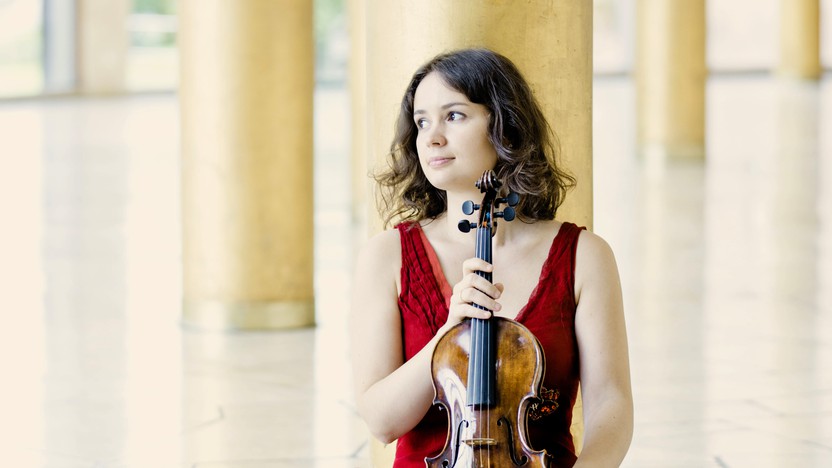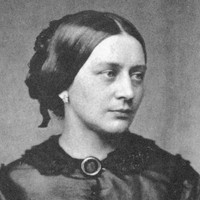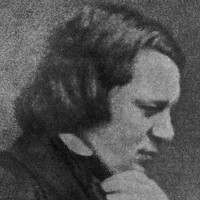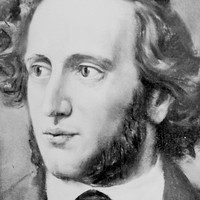Patricia Kopatchinskaja and Polina Leschenko

Sponsored By
- December 7, 2018


Sponsored By


Growing up in the musically fertile city of Leipzig, Clara Wieck blazed through a rigorous curriculum of piano, composition and ear training devised by her father, the noted pedagogue Friedrich Wieck. Clara made her public debut at age nine, the same year an 18-year-old law student with musical inclinations, Robert Schumann, moved into the Wieck household to take intensive piano lessons. His piano career fizzled out after a hand injury, but 11 years after he was first enchanted by Clara’s talents — and after overcoming a bitter and protracted legal battle with her father — the struggling composer and journal editor, Robert, was able to marry the budding superstar pianist, Clara.
Clara found a way to keep up a concert career while raising children and caretaking her husband living with a mental illness, but she never resumed the pace of composing that peaked during her teenage years. Though small in quantity, the works from her married years are superb in quality, a sign of the high level of musical discourse and mutual respect in the Schumann family. She composed the Three Romances for Violin and Piano in 1853 for an upcoming tour with the young Hungarian violinist Joseph Joachim, a significant new addition to the Schumann orbit. (That same year, Joachim introduced another young friend to the Schumanns, Johannes Brahms, who remained one of Clara’s closest confidantes for the rest of her life.) The Three Romances were among Clara’s final works, coming not long before Robert’s psychiatric breakdown in 1854. Even after he died in 1856 and she continued her historic career as a pianist, she abstained from releasing any new compositions during the forty years she survived him.
The instrumental form of the Romance had its origins in a simple, sentimental style of song. Clara wrote a number of Romances for solo piano, as well as this set of three with violin. The first, in a subdued, walking pace, engages the violin in song-like melodies over a bed of lush, free-ranging piano harmonies. The second strikes up an Allegretto tempo and exchanges coy musical gestures, including elegant trills and playful grace notes. The “quick and passionate” finale uses rapid figurations in the piano to amplify the heated emotions.
Aaron Grad ©2022

In February of 1854, Robert Schumann was tormented by auditory hallucinations—first just isolated tones, but eventually whole pieces of music, and even a cacophony of “tigers and hyenas.” One night he transcribed a theme that he believed was sung to him by angels, and in the following days he managed to craft a set of variations, known now as the Geistervariationen, or Ghost Variations. In his confused state, he had forgotten that this “angelic” theme was actually his own creation, written several months earlier for the slow movement of his Violin Concerto.
After working on the variations on February 27, Schumann snuck out of his house in Düsseldorf and plunged, fully clothed, into the frigid Rhine River. Bystanders rescued him from this suicide attempt, but Schumann lived out his remaining two-and-a-half years in a mental hospital, leaving the Ghost Variations as his final work for piano.
Aaron Grad ©2018

Schumann was in the midst of a creative surge in August 1853 when he received a visit from a new friend, the 22-year-old Joseph Joachim. Schumann dashed off a Fantasy for violin and orchestra for the young virtuoso, and within a few weeks he began a larger work, the Violin Concerto in D Minor.
Schumann finished the concerto on October 3, and Joachim gave a private reading in Hanover in January—a month before Schumann’s suicide attempt and confinement. Joachim, who had reservations about the concerto, deemed it a troubled product of Schumann’s madness, and he convinced Clara Schumann and Brahms (who was compiling the complete edition of Schumann’s works) to suppress the concerto entirely. Joachim retained the manuscript and stipulated in his will that it should remain unpublished for 100 years past Schumann’s death.
For three decades the score sat untouched in the Prussian State Library, until the Hungarian violinist Jelly d’Aranyi, the grandniece of Joachim, claimed to have received a spiritual communication that she should revive the forgotten work. Over the objections of Schumann’s 86-year-old daughter, the Joachim family granted permission, and the first performances took place in 1937, using an edition revised by Hindemith and played by the German violinist Georg Kulenkampff, followed soon after by the debut of Schumann’s original score by the 21-year-old Yehudi Menuhin.
In 1958, after the death of the beloved British horn player Dennis Brain, Benjamin Britten adapted Schumann’s slow movement into a standalone Elegy by removing the wind parts and supplying a new ending, since the original linked directly to the finale. The violin’s serene melody is clearly the source of the theme for the later Ghost Variations that Schumann attributed to the angels in his hallucinations.
Aaron Grad ©2018

When Prince Nikolaus Esterházy completed a lavish country palace in 1766, the workload for his tireless Kapellmeister, Joseph Haydn, increased dramatically. The “summer” seasons at the estate stretched to be nearly year-round, and all the while Haydn had to produce operas, provide music for church services, mount concerts and attend to any other musical needs for his insatiable patron. “In Eszterháza,” Haydn acknowledged, “I was forced to become original.”
Some of Haydn’s most original efforts in the late 1760s and 1770s reflected an artistic trend that has been dubbed Sturm und Drang (“Storm and Stress”) after a play of the same name. From literature to painting to playwriting, artists dared to explore emotional extremes and dark discomfort; for Haydn, it led to his first symphonies constructed in minor keys, including the Symphony No. 45, dubbed Farewell.
The legend behind the nickname is that Haydn intended to make a subtle protest to the prince, who had kept his court musicians at the summer palace (and away from their families in the city) longer than expected. Haydn made his point in an unusual slow coda appended to the finale, in which he instructed the musicians, as their parts dropped out in turn, to blow out the candles on their music stands and leave the stage until just two muted violins remained. Apparently, Prince Nikolaus got the joke, and he released the musicians the next day.
Aaron Grad ©2018

Felix Mendelssohn, the grandson of a famous philosopher and the son of a successful banker, took full advantage of the opportunities that came with his family’s position. This was a child who celebrated his 12th birthday with a private performance of his first musical, in a fully staged production at his house in Berlin, featuring members of the royal orchestra! By the age of 14, Mendelssohn had tried out a dozen symphonies for string orchestra at the family’s regular house concerts, and he had also completed two concertos, for violin and piano respectively.
Mendelssohn’s next concerto featured both violin and piano as solo instruments, allowing the young prodigy to perform from the keyboard alongside his adored violin teacher, Eduard Rietz. This idea of a concerto for multiple soloists drew from the Classical tradition of the Sinfonia concertante, as modeled by the likes of Mozart, Beethoven and Hummel (whose own concerto for violin and piano may have prompted Mendelssohn’s example). But Mendelssohn also reached further back into musical history, following the lead of his tradition-bound teacher, Carl Friedrich Zelter, and embracing the most unfashionable of composers: J. S. Bach.
The first theme of the concerto’s opening tutti, with its stark theme and running counterpoint, points to Bach’s studious influence, while the lighter second theme, set over bouncing accompaniment, has a singing quality inherited from Mendelssohn’s other enduring hero, Mozart. Once the soloists enter, the substantial first movement keeps the spotlight locked onto the concerto’s stars, as was typical in that age of budding Romanticism and lavish virtuosity.
After presenting the slow movement’s beautiful theme with the soft glow of mutes, the strings again recede to the background. While the violin soloist expounds the singing melodies, the pianist envelops its partner in ornate patterns of decoration. The violin participates in some of the finale’s flashiest runs, but Mendelssohn assigned the most difficult and attention-grabbing music to his own extremely capable hands.
Aaron Grad ©2018
Get driving directions and find nearby parking.
Find dining options close to the venue.
View seating charts to find out where you'll be seating.
SPCO concerts are made possible by audience contributions.
For exclusive discounts, behind-the-scenes info, and more:
Sign up for our email club!
